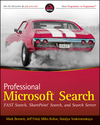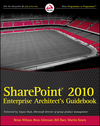Late last year (2009) Microsoft had released the new SharePoint Connector for FAST ESP.
I’m planning on blogging about the installation process for the connector (in Part 2), security trimming support through the installation and configuration of FAST ESP Security access module (Part 3) as well as integration of the FAST ESP search results with SharePoint UI using CodePlex Web Parts (Part 4) and some of the tricks of making it all work together.
But for now, let’s take a look at some major functionality that this connector is providing:
- Secures SharePoint content through indexing of SharePoint ACLS.
- Supports User and group extraction, AD users and Groups as well as SharePoint Groups
- Mapping of SharePoint groups membership to AD through Security Access Module
- Besides NTLM it also supports Kerberos authentication.
- Indexes all possible meta data in the propertybag SharePoint Property.
- Indexes all information as XML in the scopes scenario.
- Include/exclude filters that allow you to configure the connector to include/exclude SharePoint webs/lists, you can even include / exclude by the type of the lists, or/and by the title, etc.
- Exposes inheritable properties for lists items, such as site metadata (Created by, description, etc)
- No need to install anything on WFEs or SharePoint servers, this version of the connector is using SharePoint Web Services instead of it's own as it was in the previous version.
- While there is no User Interface for the connector, it does come with installation wizard.
- Error recovery and checkpoint.
- Connector state can be stored in SQL or Oracle DBs, and these databases are very light weight.
- Export of processed SharePoint content into FastXML fields. This is very useful when after initial run of the connector you need to fine tune document processing pipeline and index profile. During testing you will not have to run the connector multiple times against live data, you can just use file traverser to reprocess all the content from XML files.
Enjoy :-)






